97% of marketers use Facebook ads and a Facebook ads strategy.
That stat tells us that Facebook ads are delivering value to advertisers, and second, it tells us that in order to truly succeed in the social media space, you'll need to have a Facebook ads strategy yourself.
With so many advertisers using Facebook, it’s not just a case of creating a quick ad, throwing $10 behind it and seeing results. (As much as we wish this was the case!)
From targeting the right audiences and using the right creative to choosing the right placements and timing, there are tons of decisions you’ll need to make to create a winning ads strategy.
So with that in mind, here’s our recipe for creating a winning Facebook ads strategy for 2021 and beyond.
Full Proof 'Facebook Ads Strategy' Guide
 What is a Facebook Ads Strategy?
What is a Facebook Ads Strategy?
A Facebook Ads Strategy is vital to the success of your ad campaign. Without it, you won't have clearly defined goals, won't be able to track success, won't know if you could be performing better doing something else and will have nothing to go on when it comes to what ad format to use, what kind of images or even what style copy works best.
And we'll show you how to make a winning one below. ⬇⬇
#1 Think About Your Facebook Ads Strategy Goals
“What does success look like?”
This is a question you should ask yourself before every advertising campaign you run, and success can look different at various parts of your funnel.
For example, here’s a new-look marketing funnel from AWeber:
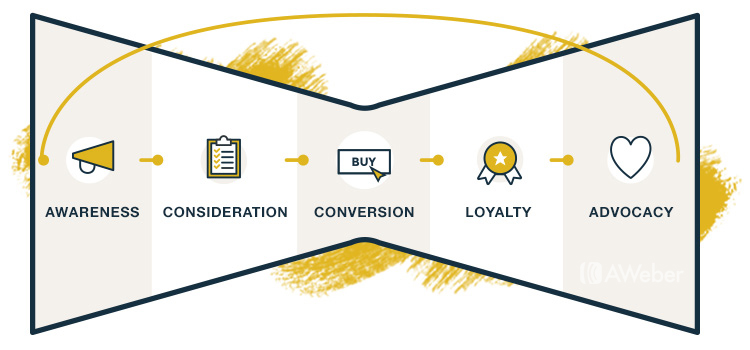
-
If you’re creating Facebook ads at the awareness stage of your funnel, you’ll probably want to prioritize metrics like reach and engagement to introduce people to your brand.
-
At the consideration stage you might want to create ads to drive website clicks so your audience checks out your product or signs up to a demo.
-
And when it comes to conversion stage you’ll be looking at how many people saw your ads and then bought your product.
It’s also important to think about the amount you can afford to spend on your Facebook ads strategy before you get started.
One of the best ways to figure out your budget is to look at your customers lifetime value (LTV). Essentially LTV is the amount of revenue your average customer will generate for you in the long-term - this post from Smile.io shares some great tips on calculating LTV.
Once you have your budgets in place and know the goals of your strategy, it’s time to start thinking about your audience…
#2 Know Your Audience
In most cases, Facebook ads are only successful if they reach the right audience. So this part of your Facebook ads strategy is integral to building successful campaigns.
With Facebook ads, you can build audiences based on a range of factors. Here are some of the audience targeting options Facebook offers:
-
Locations: Target ads at people based on a location (e.g. a country, county, state, province, city, congressional district, ZIP code or postcode).
-
Age: Target ads at people within an age range.
-
Gender: Target ads to specific genders, or all genders.
-
Languages: Target ads at users of particular languages.
-
Detailed targeting: Include or exclude people from an audience based on demographics, interests and/or behaviors.
-
Connections: Include or exclude people from your audience based on connections to your Pages, apps or events.
To create audiences you can use as many of these options as you like. In fact, the more targeted your audience, the higher your chances of resonating with those people. For example, ads that stand out to female business owners in New Orleans will look very different to ads to attract 20-30 year-olds seeking to buy their first real estate.
Custom Audiences
Facebook also offers a Custom Audiences option. Custom Audiences are made of people your business has already had some interaction with — either on or off Facebook.
For example, you could create an audience of people who have visited a certain page on your website, upload a database of existing customers to Facebook or build an audience of people that have engaged with specific content your business has published on Facebook.
Lookalike Audiences
A powerful key feature when it comes to your Facebook ads strategy, lookalike audiences allows businesses to target customers who closely resemble current customers and followers.
You'll have the choice of targeting people interacting with your ads, OR current loyal customers, which makes this tool a key element to a successful Facebook ads strategy.
Finding your target audience
When it comes to creating an audience for your ads, look at what you already know about your business — you might already have target customer profiles, but if not, there’s a wealth of data available in Google Analytics.
1) 15 FACEBOOK RETARGETING ADS EXAMPLES TO MAKE MORE MONEY
2) LINKEDIN ADS VS FACEBOOK ADS: WHICH IS OF GREATER WORTH FOR B2B?
By looking at your audience and demographic data in Google Analytics you can find the age and gender of people that visit your site:

And even the interests of those people:
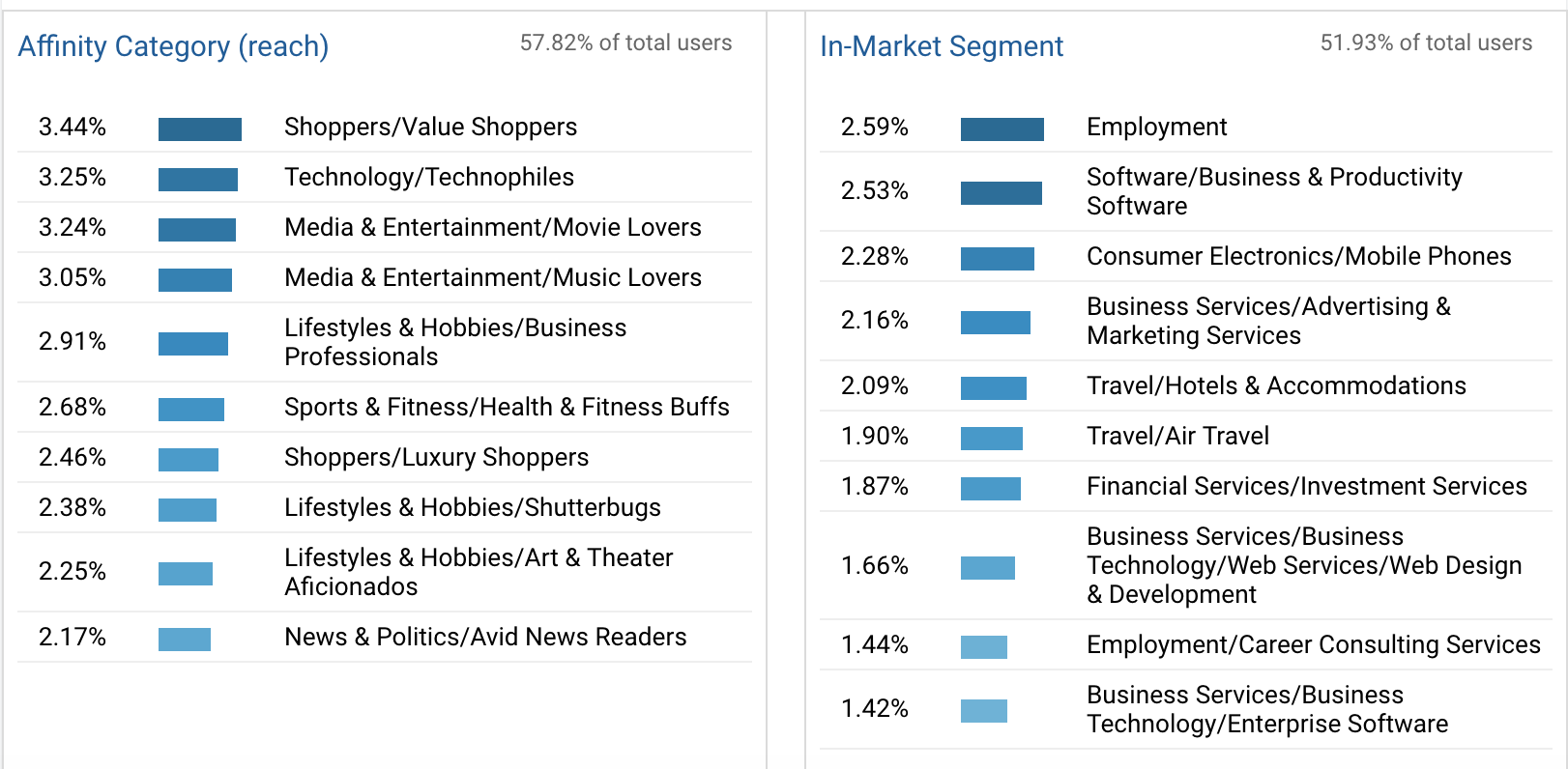
This can be a great starting place if you haven’t already got a target customer in mind. For example, just from these quick snapshots I could create an audience of people that are: Male, between 25-34 years old and work in the software industry.
#3 Experiment with Facebook Ad Types and Placements
Facebook ads has a variety of ad types and placements available across Facebook, Messenger and Instagram.
Facebook ads are essentially made up of two components:
-
The ad type: What it looks like and the type of content it includes (video, image, link, etc)
-
The placement: Where it’s displayed to Facebook users (News Feed, Instagram Stories, etc)
Here’s a quick breakdown of some of Facebook’s more prominent ad types:
Video ads
By 2021 Facebook predicts that 78% of mobile data will be video. And with so many people consuming video on Facebook, you can’t really afford to ignore it any longer.
Video ads enable you to connect with your target audience and tell your brand story in the medium that’s super engaging. Think of video ads as mini-TV commercials for your brand.
Video ads aren’t just great for engagement though, brands like Bottega Veneta have used video ads to generate a 68% increase in sales.
Photo ads
Photo ads are a simple but effective format. If you can combine a stunning, eye-catching image with great copy, you’re sure to be onto a winning formula. One Facebook study even found that Photo ads outperformed other ad types when it comes to driving traffic.
Using Photo ads GoSupps was able to create a campaign that generated a return of 4 time its ad spend.
Collection ads
Collection ads are great for retail and ecommerce business. Here’s how Facebook describes Collection ads:
Collection is an ad format that lets people move from discovery to purchase in a smooth and immersive way. Each collection ad features a primary video or image with four smaller accompanying images below in a grid-like layout.
With Collection ads, adidas was able to create an immersive campaign that generated a 5.3x return on ad spend and 43% decrease in cost per conversion.
Carousel ads
Carousel ads enable advertisers to showcase up to 10 images or videos within a single ad. Each image or video can also feature its own custom link. This ad type can be perfect for featuring a range of different products in a single ad, or diving deep into the features and selling points of one specific product.
Carousel ads played a key part in Hippie Runner’s Facebook ads campaign that generated a 7x increase in online sales.
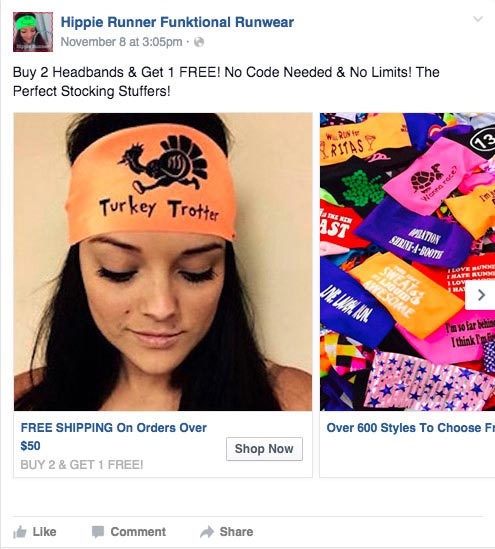
#4 Testing Your Facebook Ads Strategy
One of the biggest mistakes you can make with any Facebook ads strategy is going right in with one ad, and spending your whole budget on it. You should never run with just one ad.
To find a recipe that works for your business, connects with your audience and helps you achieve your goals, you’ll have to test multiple ads before you’ll find a winning formula. And even if your first ad set is performing well, there’s no reason you couldn’t still see better results after running a few more experiments.
But what should you test? Here are a few options:
-
Ad placements: You could experiment with Stories ads, compare the Instagram feed to the Facebook News Feed.
-
Ad types: As listed above, Facebook has plenty of options when it comes to ad types. See how video performs vs images, or try telling a story across a number of slides with Carousel ads.
-
Creative: Do vertical videos perform best? Could you test out user-generated content in your ads?
-
Copy: The copy accompanying your creative is super important on Facebook. You could try short copy vs long copy, capitals vs sentence case, etc.
-
Audience: You could test the same ads against a couple of audiences to see which is more responsive to those ads.
There are almost unlimited variations you can create with Facebook ads. If you have any previous ad campaigns or organic Facebook posts that have performed well, you could use those as a starting point to figure out what to test. Facebook has a great guide on testing ads here.
#5 Get Creative With Your Facebook Ads Strategy
If you don't have some killer creatives on the docket for your Facebook ads strategy, we need to talk.
Your content needs to speak to your audience-whether you're using video, animated graphics or stock photography isn't the point. The point is to make sure you're taking advantage of opportunities like providing a discount code to drive more sales, or providing educational graphics that can help your audience in the long run.
Overall, we found that the most effective Facebook ad creatives were entertaining to the audience. So this means when you're devising your epic Facebook creatives ad strategy, the focus should be on entertaining your audience in one way or another.
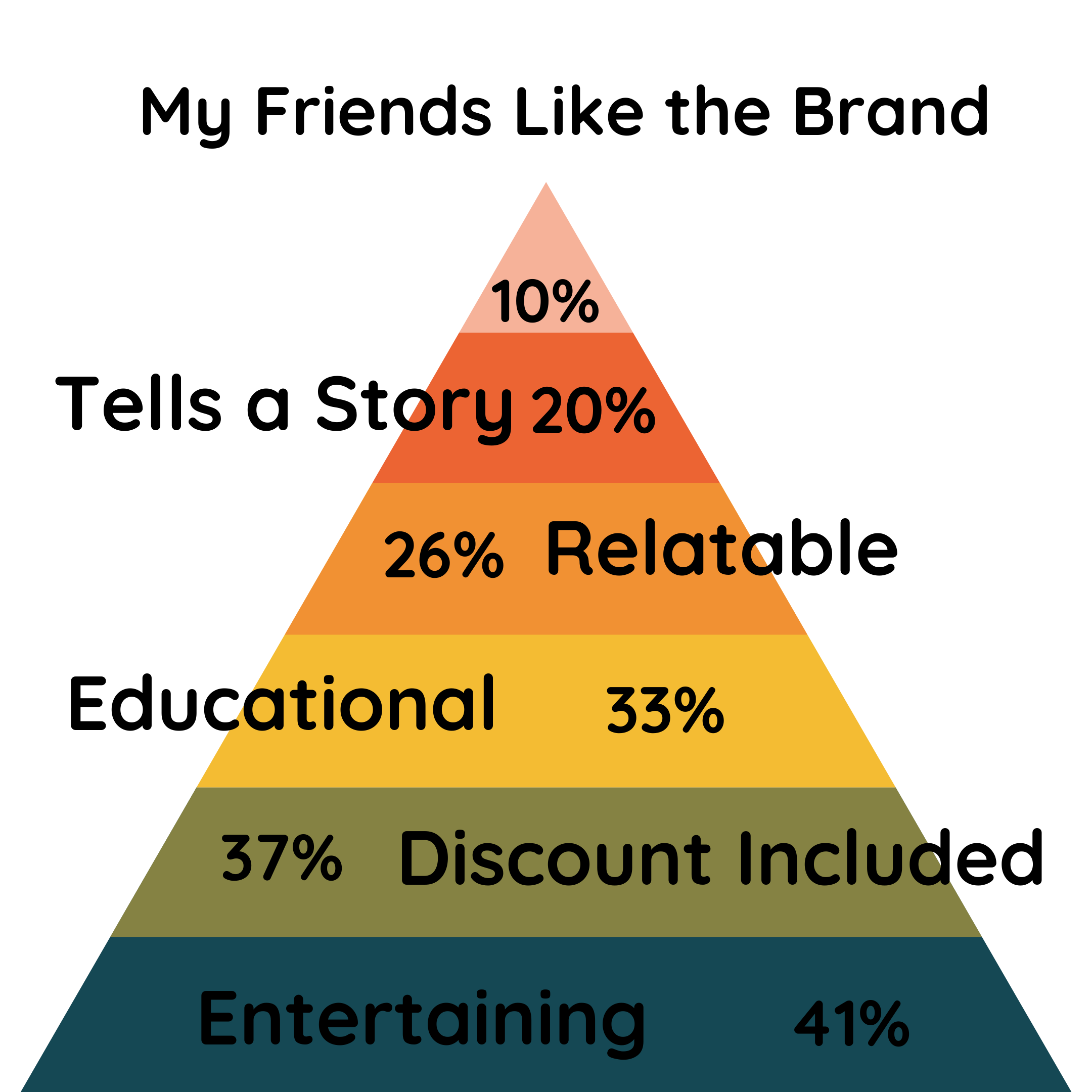
Key takeaway? Don't neglect the entertainment side of your Facebook advertising efforts!
#6 Measure the Results of Your Facebook Ads Strategy
How do you know if your Facebook ads strategy is working? Simple: Measuring results.
When you set the goals of your strategy, you essentially laid out the outcomes you were hoping to achieve, and you should measure your results against those initial goals.
There are a ton of metrics available to Facebook advertisers but you want to focus on just the metrics that matter to your overall goals. For example:
-
Were you looking to increase product sales? Check how many sales your ads generated.
-
Did you want more traffic? Check analytics to see how many clicks your campaign drove.
Measurement isn’t a one-off task either. You shouldn’t wait until the end of your campaign to see how it performed. Measurement should take place on a regular - even daily - basis to see how you can improve your strategy.
Facebook Ads Strategy: Do your research
You can learn a lot and gain plenty of inspiration from looking at what’s working for others when it comes to Facebook ads. For example, you could checkout Facebook’s success stories or even spy on your competitors Facebook ads to inspire your Facebook ads strategy. Remember, even the best creative advertising agencies can make way for improved techniques.
What’s your Facebook Ads strategy for 2021?
So there you have it... a quick outline for creating a winning Facebook ads strategy for your business, with our without an ad agency. No single strategy will work for every business, so you need to experiment and find what works for you!
How are you approaching Facebook ads in 2021? What success have you had? Leave a comment or get in touch if you’d like to discuss further optimizing your Facebook ads plan!





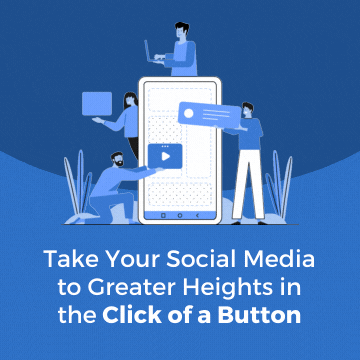






Your Comments :